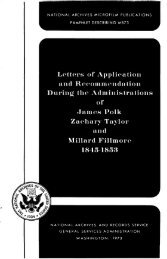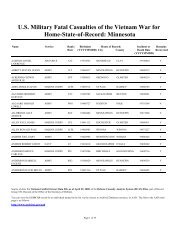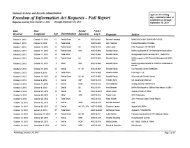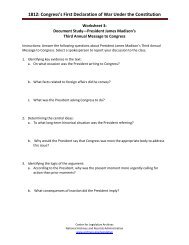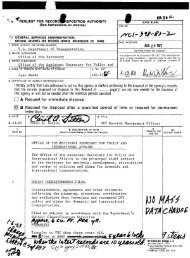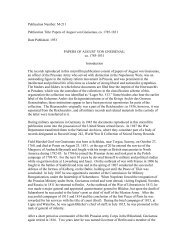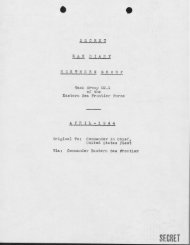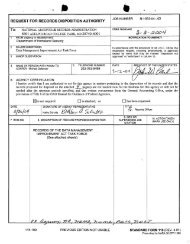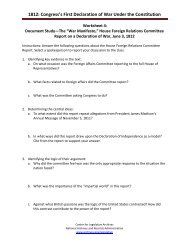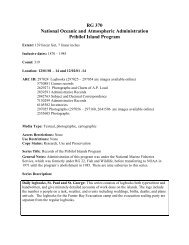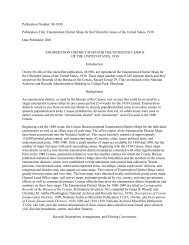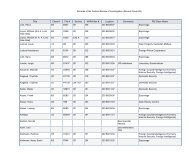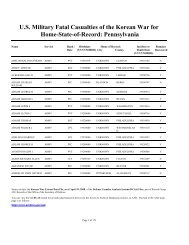HITLER'S SHADOW - National Archives and Records Administration
HITLER'S SHADOW - National Archives and Records Administration
HITLER'S SHADOW - National Archives and Records Administration
Create successful ePaper yourself
Turn your PDF publications into a flip-book with our unique Google optimized e-Paper software.
of her former or present job. She was not to leave the Soviet sector; but after she<br />
contracted diphtheria, she was allowed admission to the hospital in the British<br />
sector. On leaving the hospital, she said, “the Russians did not take any more<br />
interest in my person.” She left for Munich <strong>and</strong> arrived on April 20, 1946. 6<br />
Her third interrogation benefited from the direct questions from the British.<br />
Junge noted that Hitler hoped to delay his suicide until receiving confirmation<br />
that the couriers carrying copies of his last political testament had reached their<br />
recipients, namely Gr<strong>and</strong> Admiral Karl Dönitz, whom Hitler appointed head<br />
of state, <strong>and</strong> Field Marshal Ferdin<strong>and</strong> Schörner, whom he appointed army<br />
comm<strong>and</strong>er-in-chief. With the ring closing around his Berlin bunker, Hitler<br />
would not allow the Soviets to take him alive. But he knew Dönitz, whose<br />
headquarters was near the Danish border, <strong>and</strong> Schörner, whose headquarters<br />
was in Czechoslovakia, would fight until the last cartridge <strong>and</strong> hang as many<br />
deserters as need be. “Hitler was uneasy,” recalled Junge, “<strong>and</strong> walked from one<br />
room to another. He said that he would wait until the couriers had arrived to<br />
their destinations with the testaments <strong>and</strong> then he would commit suicide.” 7 The<br />
couriers were not able to leave the Berlin area.<br />
The British were also very interested in Hitler’s Gestapo chief, Heinrich Müller,<br />
who would have offered a treasure trove of counterintelligence information on<br />
the Soviets. Allied counterintelligence officers failed to locate him after the war.<br />
Some leads placed him in Berlin at war’s end <strong>and</strong> others suggested that he had<br />
fled south. The absence of an arrest or even a corpse led to later conspiracy<br />
theories that Müller worked for either Allied or Soviet intelligence. The bulk of<br />
the evidence, pieced together over the next quarter century, indicates that Müller<br />
was killed in Berlin during the war’s final days. 8<br />
Junge was asked directly: “On what occasions did you see Mueller in the<br />
Bunker? What do you know of his movements or activities during the last days?”<br />
Junge did not know Müller personally. She noted that she saw him for the first<br />
time on April 22, 1945. “Mueller remained in the shelter until Hitler’s death,” she<br />
said. “I … observed him talking some times (sic) with Hitler….” Junge continued,<br />
“I do not know any details about his activities. He had taken over the functions<br />
of [Reich Security Main Office Chief Ernst] Kaltenbrunner….” 9<br />
At the time of Hitler’s suicide, Kaltenbrunner was in Salzburg. He had<br />
searched for a negotiated peace through various channels while also hoping that<br />
New Information on Major Nazi Figures | 7



